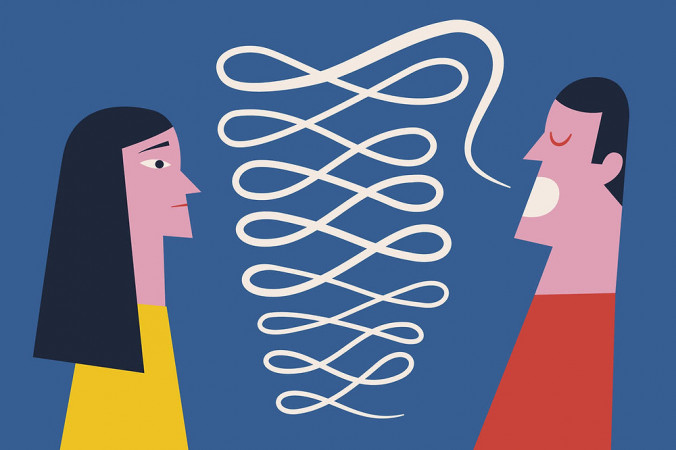Your attachment style and how it affects relationships

Just because we share the need to relate, interact and love does not mean we approach unions in the same way. In fact, our attachment history formed early in life and developed over the years as well shapes the bonds we make with people.
Nailantei Norari @artnorari
You have heard people complaining of how they went on a single date and their partner started talking of a life together and the possible names of their children.
Or maybe you are that person who sees and hears a long future in your partner’s mundane words.
And no matter how much you try to shake off this attachment, the person won’t break up with you.
While there may be many factors at play here, such as societal pressure to get hitched or a person being single for quite a long time hence the need to attach, Ken Munyua, a leading psychologist says that such behaviour is normally exhibited by a person with an anxious pre-occupied attachment style.
This is one of four attachment styles that is characterised by the person easily falling in love, even in unhealthy situations, idolising ‘the one’ and looking at relationships as that which will save or complete them.
“People with this attachment style tend to crave emotional intimacy, even when their partner is not yet ready or the situation doesn’t call for it.
They need a lot of approval, responsiveness, and reassurance from their partners.
They can get anxious when they don’t get it. Children who have emotionally unavailable parents have this attachment style,” Munyua explains.
Psychology of attachment
But what exactly is attachment style and why should you know yours? The psychology of attachment helps us analyse our attachment style and can even guide us in recognising patterns and correcting them.
Research shows that individual attachment style, the template that one uses to get and form relationships, influences someone’s relationships be it romantic, familial, platonic or even career choice and career partners.
There are four attachment styles, or relational templates that people fall into. They are; secure, anxious-preoccupied, dismissive-avoidant and fearful-avoidant also known as disorganised style.
While it is important to learn and know one’s attachment style, Ken advocates for caution, especially when dealing with partners who have the insecure attachment styles so as not to hurt them and further exacerbate their fear and mistrusts of relationships.
Munyua says when a person has a secure attachment style, they feel confident in their relationship and their partner and have no anxiety or fears of being left.
They feel connected, trusting, and comfortable with having independence and letting their partner have independence even as they openly express love.
They reach out for support when they need it and offer support when their partner is distressed.
“This type of attachment style starts when, early in life, a child feels that their parent is a secure base, so that even though they are happy to be with mum or dad, they also feel confident enough to explore the world on their own.
Children grow up this way when their parents themselves are securely attached people, and when they use an authoritative parenting style, meaning they are involved and firm, but also warm and allow independence,” he shares.
People who have the dismissive-avoidant attachment style tend to be emotionally independent—perhaps overly so.
They find it uncomfortable to get too emotionally close to others or to trust them fully. In fact, those around them may describe them as actively trying to avoid closeness.
They seem to pride themselves on not needing emotional intimacy. When they are rejected or hurt, they tend to pull away.
The dismissive-avoidant attachment style is associated with having had negligent or absent parents and generally having experienced
rejection early in life from peers or siblings.
The anxious preoccupied person with a fearful avoidant or disorganised attachment style is confused.
They essentially have both the dismissive and the anxious styles combined—both wanting emotional closeness and also pushing it away.
They are fearful of fully trusting others and yet they need approval or validation.
They often deny their feelings or are reluctant to express them. At the same time, they are more easily jealous and tend to perceive greater threats from possible romantic rivals.
This occurs when the parent is abusive or neglectful of the child. In this scenario, the child still looks to their parent for basic needs, but they also fear the parent since they are abusive or too strict.
So which one are you?
“It is easy to find your attachment style, so long as you know the four attachment styles.
Be brutally honest with yourself, look at the partners you have and how you relate with them and you might be able to place yourself.
You can also do an online psychometric test or visit a psychologist for assessment,” Munyua advises.
He goes on to elaborate that one’s attachment style is not set in stone. It changes even in a relationship’s lifetime as the attachment at the onset may be different in later stages.
Similarly, one’s social circle can also change one’s attachment style as they can teach someone independence and grow their self-esteem, which directly determines one’s approach to relationships.
“It is possible to cultivate a secure attachment style. You need to remember that we are all products and producers of our environment.
The insecure attachment styles are based off fears of others and low self-esteem.
One, therefore, needs to resolve issues that may be making them this way, whether it is with their parents or their first romantic relationships.
It takes work, critical self-awareness and a willingness to change,” Ken says in ending.















